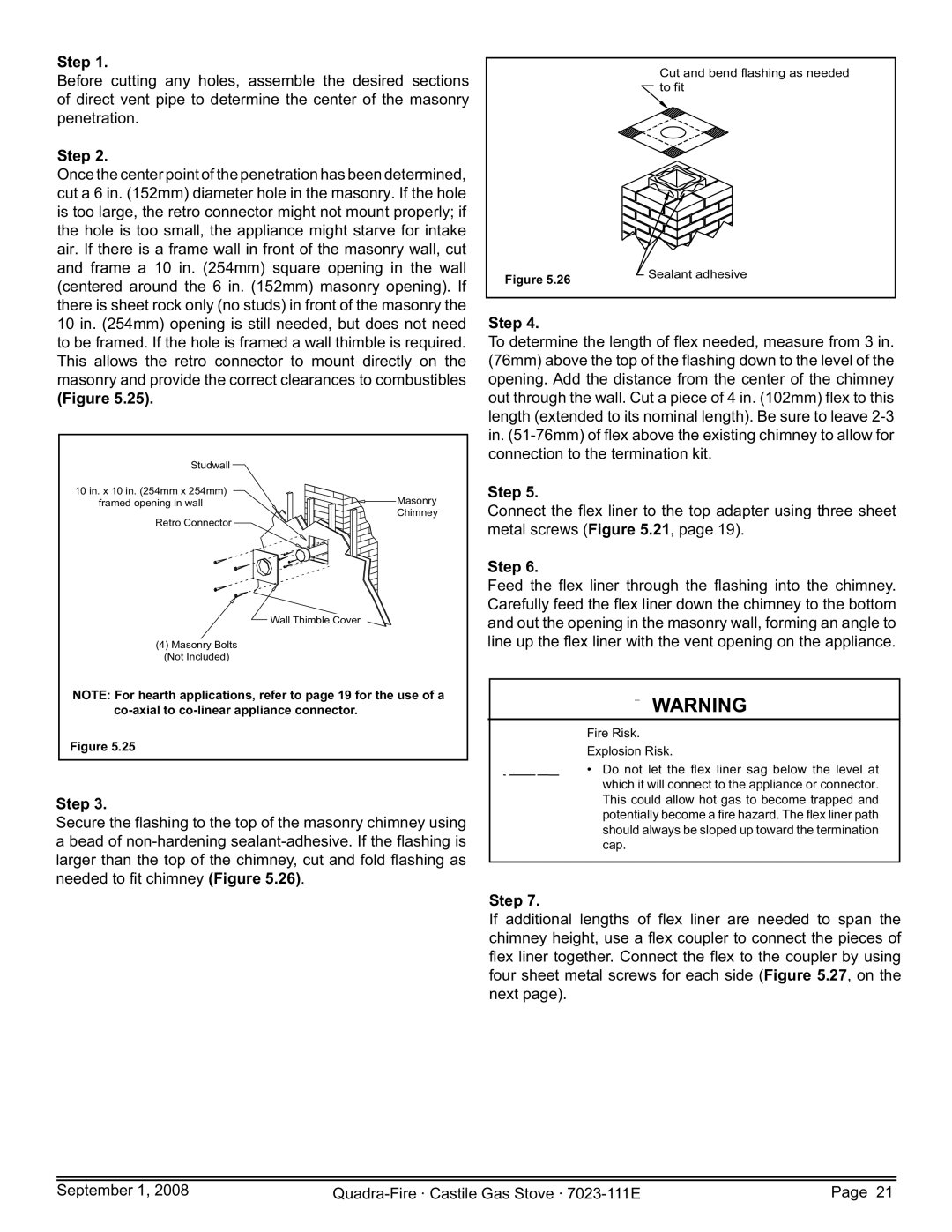CASTILE-GAS-CSB, CASTILE-GAS-MBK, CASTILE-GAS-PMH, CASTILE-GAS-CWL specifications
Hearth and Home Technologies (HHT) has made significant strides in the world of gas stoves, offering a range of stylish and efficient options tailored to elevate any living space. Among their impressive lineup are the CASTILE-GAS-CWL, CASTILE-GAS-PMH, CASTILE-GAS-MBK, and CASTILE-GAS-CSB models. Each of these gas stoves combines modern technology with classic design, making them a popular choice for homeowners looking to add warmth and comfort to their homes.The CASTILE-GAS-CWL features a classic design with elegant lines, making it suitable for both traditional and contemporary spaces. This model comes equipped with a powerful heat exchanger that efficiently distributes warmth throughout the room while maintaining optimal energy consumption. The intuitive control panel allows users to easily adjust the temperature settings and flame height, providing a customized heating experience.
Next, the CASTILE-GAS-PMH model stands out with its sleek and modern aesthetics. With an emphasis on efficiency, this gas stove incorporates advanced combustion technology to ensure cleaner burning and reduced emissions. Its programmable thermostat feature allows for precise temperature control, which can be operated remotely, providing convenience to users. Enhanced safety features, such as an automatic shut-off system, give homeowners peace of mind.
The CASTILE-GAS-MBK model showcases a bold and contemporary design, featuring a large viewing window that allows users to enjoy the mesmerizing flames. Known for its robust build quality, this model is designed to withstand the test of time. The adjustable flame height and remote control operation further enhance user convenience. Additionally, the high-efficiency rating of this model makes it an environmentally friendly choice, reducing the overall carbon footprint.
Finally, the CASTILE-GAS-CSB brings a touch of rustic charm to its design while incorporating advanced heating technologies. This model offers exceptional heat output and a large firebox, ensuring maximum warmth in larger areas. The vent-free technology allows for greater flexibility in installation, enabling homeowners to place it in a variety of locations without the need for external venting systems.
Overall, Hearth and Home Technologies has successfully created a line of gas stoves that blend aesthetic appeal with reliability and efficiency. Each model in the CASTILE range comes equipped with unique features that cater to diverse consumer needs, making them an excellent addition to any home desiring energy-efficient heating solutions. Whether you're looking for classic elegance or modern flair, HHT's CASTILE series has something for everyone.

